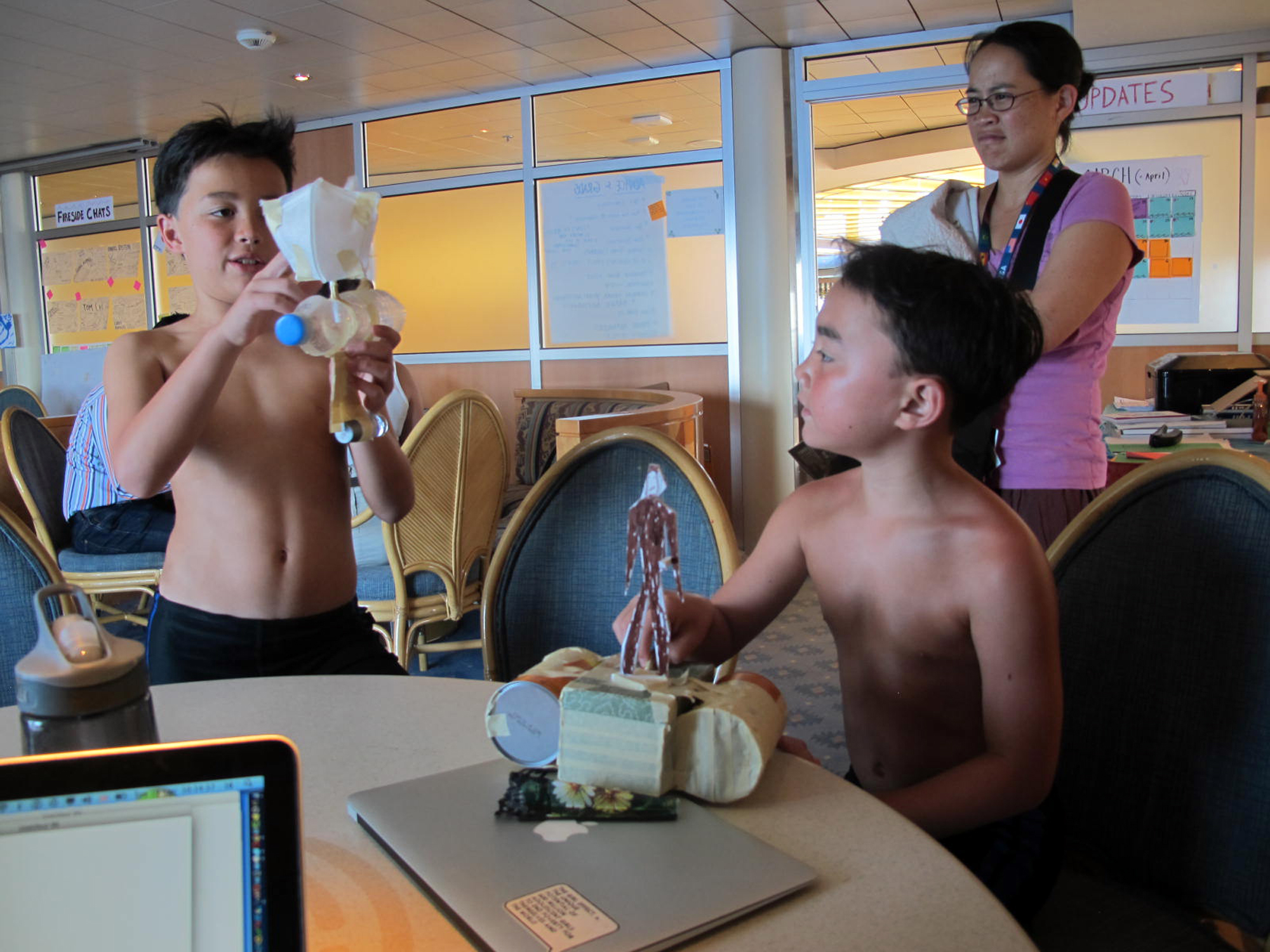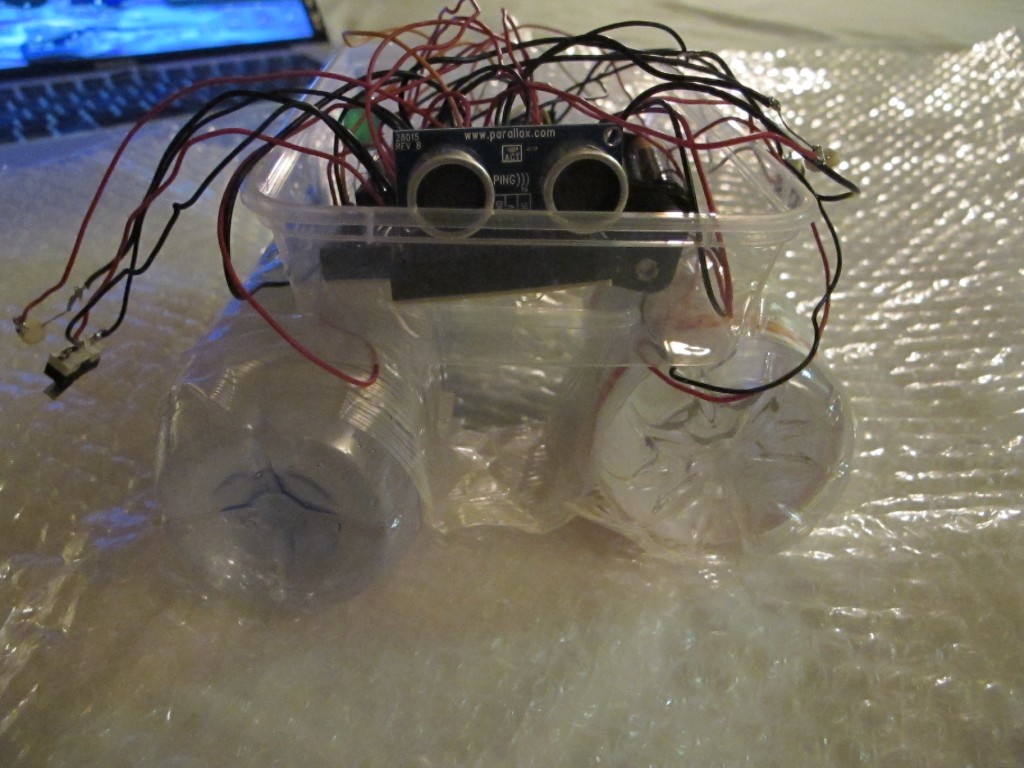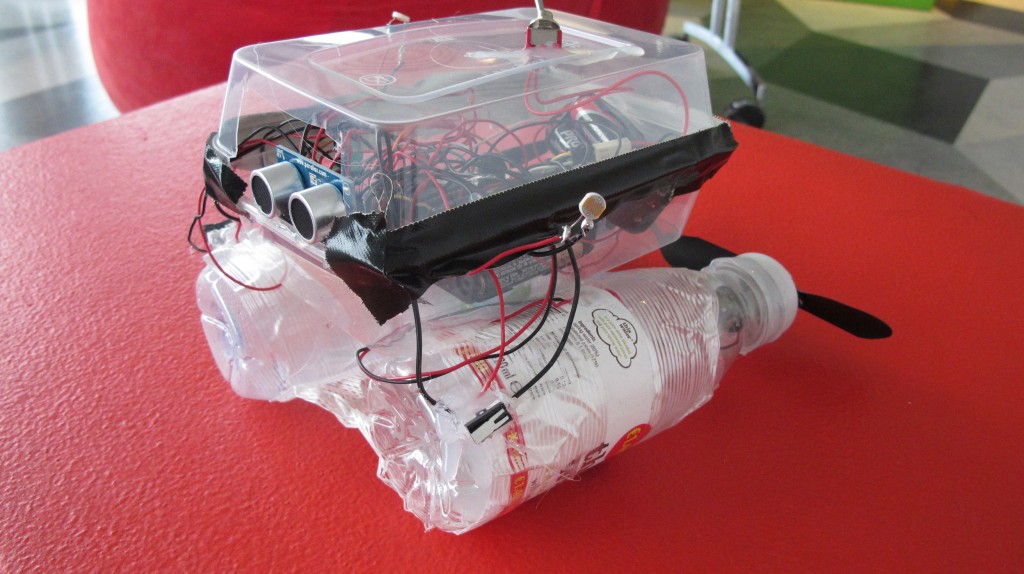Unreasonable at Sea day 71: Resident Attorney
Today we are somewhere here, heading south west from Mauritius making our way south around Madagascar and towards Africa coast, through the Indian Ocean.
Resident Attorney
The Kembel kids showed Cesar the progress they had made miniature boats they were about to test in the pool:


Their boats reminded me of a small robot boat I made (and taught guys to make at a workshop at the Science Gallery, Dublin, Trinity College) :
Spaghetti boat:


Also I published this on Instructables
We had a meeting with Rehan Hasan, the resident attorney on board.
We of course have many IP and legal questions, especially considering that we are in the midst of completing a Protei-specific Open Hardware Licence with Andrew Katz.
Open Hardware: build business to fail, build technology for the environment
We do not want anyone to put us out of business : as in, steal our tech and patent it so we cannot any longer make flexible hull sailboats with segmented bodies. We DO want people to copy and produce and distribute our technology. How do we protect ourselves for this. can we do it with a license
–>License : what does this protect – i.e. cern open source hardware license to protect documentation ownership and distribution of the “electronic / hardware” product
–is a license just a social framework / agreement or is this actually protecting you for the technology
–What are the implications of publishing documentation about the technology ?
–>does this make it impossible for others to NOT patent… does this protect us in any way?
Some IP questions from the past:
2 what are the implications of a patent on electronics? if it is open source
3 can we / should we file for provisional patents?
4 What does a patent do: protect against anyone else that tries to do what we’re doing? from taking our tech and putting us out of business?
5 How do we ensure we can monetize this technology before anyone else?
6 Shall we find a specific IP lawyer?
7 how do we stay true to open source, perhaps we cannot get a patent because then it is just free, but not open?
8 can you patent just one part of the technology and the rest is open source? will this help with funding?
9 if we publish our paper in a journal, does this suffice for protecting us against others who try to patent our technology?
4 types of protection: copyright, patent, trademark and tradesecret. Tradesecret is the only type of protection that you don’t apply for. For example, the recipe for coca cola, which is TRADESECRET, confidential. As soon as information is public info, it ceases to be proprietary because it’s in the public general knowledge. Open source means that it is published in general public knowledge, so that someone else cannot claim it as their own. So therefore, protection might come from publishing it, and making it accessible.
A LICENSE? what does it do?
It sets up general guidelines, but doesn’t force someone because we dont own it if the community makes it, it is their IP.
It sets up guidelines about : Liability issues and protections – how to get paid, warranty, limit damages, limit liability,
you can have a royalty or a license fee
Segmenting companies with different industries, geographies, assets, IP, and missions insulates liability and risk. For example, an investor can invest in one or many, or a holding company. Segmenting earlier is better. And you build in culture: control your branding strategically and thoughtfully.
workshop: intros and legal discussion
Chris from Microsoft;
Kamron – angry birds, ~5000 out of 29M users; only created technologies that brought humans closer. Now interested in : god 2.0 and self organized mesh networks using 2d technology, non regulated hi bandwidth networks, resolve power way from government pass it onto the masses.
Reyan Hassan – attorney in Denver; Entrepreneur himself, involved with venture community
Caroline from Nike.
George gives the brief of what we should prepare for the global design entrepreneurship class, but Protei opts not to be involved with the next brainstorming design challenge.
A simple framework to design good design challenges : usually people think we’re designing a thing (a lamp, a wallet) but what about service, policy etc… Try to just add the word “experience”.
REDEISTIGN BLANK experience BLANK.
Here are a couple of examples: redesign the solar cooking experience while camping. Redesign the school experience for a new students.
Redesign the investors experience for learning about prakti stoves.
IP MEETING / Workshop:
usually the answer is: it all depends.
The roadmap: the lifecylce of a business: with every company the timing changes – but by and large, it starts with:
1. the formation of the company, entry point (c corp, llc etc)
2. Doing business: form as an entity, start doing business: do contracts so you get paid through service you do, and widgets you sell
3. constructing the business – get IC and employees
5. incentivising and keeping the employees
4. scale up, take outside investment, bring it to the next level – funding from friends, family, private equity, consumer, bank loans
6. your exit: sales to third party, pass down to family, sell to employees…
There’s no such thing as a wasted experience if you learned.
We spent the rest of the day and night working a grant proposal for Think Beyond Plastic and developed our slide deck: